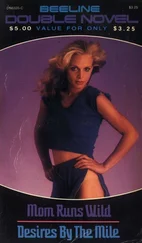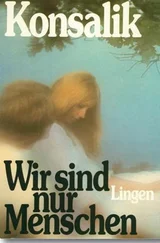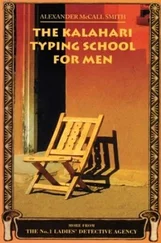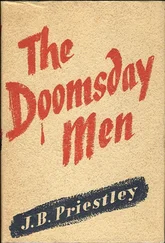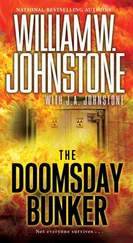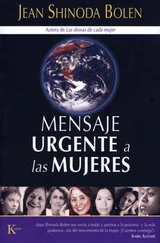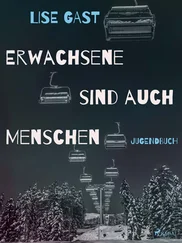It was surprise that made the gas attack so effective, both at Ypres and on the Eastern Front. In André Malraux’s novel The Walnut Trees of Altenburg , Vincent does not understand whether the gas works ‘chemically, or by means of bacilli, or simply by restricting the air supply of whoever it encircled’. 20He is an educated man, an academic, yet even he doesn’t understand what kind of threat the gas poses. Before the attack, Vincent listens to the ordinary soldiers around him as they wait to advance behind the gas cloud. For them the gas is a total ‘mystery’, with almost magical powers. They have heard that it kills without any outward signs. One soldier speculates that the victims will be left rigid, frozen ‘like dead men in a shop window’. Another wonders whether the river too will be stopped dead in its tracks, as if frozen in time. 21
The geneticist J. B. S. Haldane, whose father identified the gas used at Ypres, claimed after the war that science offered ‘the humanization of warfare’ with gas weapons. He even wrote a book to argue his case, called Callinicus after the man who invented Greek fire. (It means ‘he who conquers in a noble or beautiful manner’.) Haldane, who fought in World War I, tells how soldiers at the front ‘removed their respirators from their faces and tied them round their chests, as it was there that they felt the effects of the gas’. 22For the ordinary soldier, poison gas was a strange and frightening weapon. In the 1950s the public fear of fallout was also made more terrifying by the strangeness of the new threat created by scientists.
When, on 29 April 1915, The Times printed the scientific report in which Haldane’s father concluded that chlorine was the gas used at Ypres, such was the revulsion at this new form of killing that the paper compared the effects with biological warfare:
Men have died in the hospitals who had struggled out of the gas zone thirty or even forty hours before. The entire system is poisoned. The bodies turn purple, a form of galloping pneumonia follows, respiration runs up to as high as fifty per minute. To all intents and purposes the man dies of pneumonia. The Germans might as well shoot diphtheria, enteric [typhoid], or Asiatic cholera germs as this disease-producing gas. 23
But biological weapons – which, as we shall see, had already been explored in fiction – remained the one superweapon not deployed in war during the twentieth century, in Europe at least.
* * *
I’ll prove Chemistry is humanity’s best friend
and by using its potential bring war to an end. 24
These words are spoken by Fritz Haber in the play Square Rounds . The claim that science could save the world from war, which was only ever achieved in fictional utopias, was made as early as 1864. A British popular science journal argued that ‘if science were to be allowed her full swing, if society would really allow that “all is fair in war”, war might be banished at once from the earth as a game which neither subject nor king dare play at’. The writer used the example of Greek fire to imagine a chemical superweapon that could defeat any army: ‘Globes that could distribute liquid fire could distribute also lethal agents, within the breath of which no man, however puissant, could stand and live. From the summit of Primrose Hill, a few hundred engineers, properly prepared, could render Regent’s Park, in an incredibly short space of time, utterly uninhabitable…’ Science ‘would be blessed’ for abolishing conventional warfare. 25Even soldiers would prefer these new weapons. How could it be more humane to ‘gouge out their entrails with three-cornered pikes’ and leave them to die in agony, he asked. The argument that chemical warfare was more humane would be used by Haber and other of its advocates, such as Haldane, throughout the twentieth century. Those on the receiving end of these weapons in World War I were notably less enthusiastic.
Fritz Haber was always an ambitious man. But once the war began, friends and relatives noted that he appeared to have become obsessed with searching for a decisive weapon that would win the war for Germany. Whenever he talked about chemical warfare and his mission to create the ultimate weapon, Haber, like Malraux’s Professor Hoffman, had an evangelistic gleam in his eye. In 1913/14 the staff at Haber’s Institute consisted of just five scientists, ten assistants, and thirteen volunteers and students. By 1916 his chemists were working solely on military projects. In Dahlem and at other sites across Berlin, Haber coordinated the efforts of nearly 1,500 scientists and technicians. The war created more work for chemists.
Even after the war, when Haber was branded a war criminal by the Allies, he showed no remorse. What is more, he flouted the Versailles Treaty by secretly working with the German military to improve its expertise in chemical warfare, and even helped other countries, including Russia and Spain, to develop chemical capabilities. In 1920 he told a meeting of German military chiefs that ‘gas weapons are definitely no more inhumane than flying bits of metal’. 26
Haber worked tirelessly in his quest for a scientific solution to the war. But his obsession has to be seen in the light of the almost millennial faith in scientific progress at the start of the twentieth century. In the popular mind there were no limits to what scientists would achieve in the new century. Frederick Soddy had predicted in 1909 that atomic power would enable science to ‘make the whole world one smiling Garden of Eden’. 27
Fritz Haber himself had shown that the science of the previous century, chemistry, could provide the world with enough nitrogen fertilizer to bring that verdant new Eden within reach. If science could make the stony ground fertile and abolish hunger, then perhaps it could also resolve that most intractable of human problems – war. Ironically, as Alfred Nobel believed, to do that scientists had to create a truly terrible superweapon. Thanks to Haber, poison gas became the first weapon of mass destruction.
Up to 1915, poison gas was a weapon that had existed mainly in the minds of writers. According to Haber’s younger son, Ludwig, ‘gas can trace a direct descent from science fiction’. 28In novels and stories written before World War I, authors fantasized about scientific weapons of awesome destructive power. They dreamt up weapons so fearsome that war itself became unthinkable. Science achieved what even religion had failed to do – to bring peace on earth. In these fictions, scientists themselves are transformed into saviours.
A new literary genre arose in Europe in the wake of the Franco-Prussian War of 1870–71: future war stories, which fanned the invasion fears of the magazine-reading public. Beginning with G. T. Chesney’s ‘The Battle of Dorking’ (1871), these stories typically described Teutonic invaders reducing ‘the quiet squares of Bloomsbury… to great yawning ruins’, to quote a 1906 bestseller. 29It was a speculative (though non-fictional) study of future wars in this vein that shocked Tsar Nicholas II into taking the unprecedented step of calling an international conference at The Hague in 1899, in order to limit the weapons that could be used in war. High on his list of undesirable weapons was one that did not even exist yet – poison gas. 30
In the pages of fiction, however, wars had already been fought and won, not just with chemical weapons, but also with biological and nerve agents. The French illustrator and writer Albert Robida’s La Guerre au vingtième siècle , published in 1887, described and depicted a war fought in 1945 that was eerily prescient in its scientific weaponry. In Robida’s war, between France and Germany, airships bombard armoured vehicles on the ground and civilians in a town are killed by chemical shells exploding ‘in a greenish cloud’. Robida describes how, thanks to ‘recent advances in science’, both armies are able to use mines laden with ‘malignant fever bacilli’ and other germs, as well as ‘paralysing gas bombs’. 31By the end of the nineteenth century, scientific romances were conjuring up images of invincible invaders and scientific superweapons. H. G. Wells’s classic 1898 novel The War of the Worlds featured Martians armed with a fearsome ‘heat-ray’ as well as chemical weapons: rockets containing ‘Black Smoke’, a heavy gas that hugs the ground like chlorine.
Читать дальше


